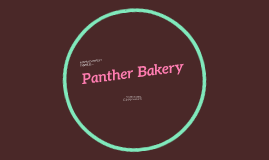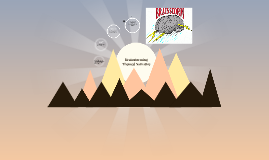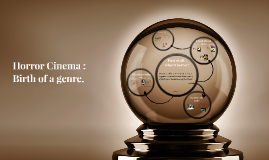Hollywood, Hollywood
Transcript: Dracula , 1931 (Wikipedia) Resurgence of the horror film in 1940's. Premises : Gothic and phantasmagoria Universal monsters First of all... what is horror? William Henry Pratt (1887 –1969) He was widely known for his roles in horror films, particularly: Frankenstein's monster in Frankenstein (1931) Bride of Frankenstein (1935) Son of Frankenstein (1939) Gave the monster dimension beyond bloodlust and childish rage, and generally without the ability to speak The Mummy Early period of talking pictures : Universal Pictures began a successful Gothic horror film series, the Universal Monsters. Other studios followed Universal's lead, for instance MCM with Freaks (1932) or Paramount with Dr Jekyll and Mr Hyde (1931). Craze for horror resulted in censorships : 1920 : The Cabinet of the Dr Caligari by Robert Weine. 1922: Häxan: Witchcraft through the ages by B.Christensen 1923 : Nosferatu by F.W Murnau 1928: The Terror, first horror film with sound Boris Karloff "The Uncanny" World War 1 aftermath Classic Horror Icons Bélà Lugosi, the "sex-symbol" Ghouls,Gimmiks and Gold : Horror films and the American Movie Business 1953-1968 by Kevin Hefferman http://www.goldenagehorror.com/ Wikipedia Culture,Evil and Horror by Paul Santilli Boris Karloff As Frankenstein's monster "La peur", youtube video by Le Fossoyeur de film "Horror Golden Age: 1930-1939 and beyond" , a podcast series on horror fictions/ movie reviews. Warren Publishing Archive : free "Famous Monsters of Filmland". Tim Burton's movies Ed Wood and Vincent All movies mentioned (Brace yourself, Halloween's coming) Classic Horror Golden Age as Monster franchises made by Universal studio, starting in the 1920's and all through the 1950's. "Horror is a film genre seeking to elicit a negative emotional reaction from viewers by playing on the audience's primal fears." Belà Lugosi Haunted Castle (1896)by G. Méliès What next? The Cabinet of the Dr Caligari (1920) 1950's : Hitchcock – Thriller, psychologic turn. Britain's Hammer Film Productions brought color to the monster movies. 1960's: Turn towards “adult”horror with Rosemary’s Baby (1968) and Night of the Living Dead (1968) The imagery of movies like Frankenstein and Dracula: so enduring as to be representative of the novel’s characters . Among many experts , considered the Golden Age of Horror cinema. Pioneers of a very popular genre, even nowadays. A tradition of horror. To conclude... From sound to censorship: Recognition of the horrific genre In a nutshell 1933: BBFC British Board of Film Censors introduced an "H" rating. 1935 : Haye's code in Hollywood. 1923 : The Hunchback of Notre-Dame 1925 : The Phantom of the Opera 1931 : Dracula 1931: Frankenstein 1932: The Mummy 1935: The Bride of Frankenstein 1939: The Tower of London 1941: The Wolf-Man Béla Ferenc Dezső Blaskó (1882 – 1956), better known as Bela Lugosi Hungarian-American actor, famous for portraying Count Dracula in the original 1931 film and for his roles in various other horror films . Often paired with Karloff, used his accent and his "hungarian charm" as his signature. To go further Bibliographie: Horror Cinema : Birth of a genre. The birth of the genre

















